I love the idea of experimental advertising. A lot of companies have dropped the experimental label in exchange for more traditional words such as engaging or inspiring. The word experimental itself isn’t as glamorous as it used to be. In the past, companies had the time, the budget, the ability, and the interest to experiment on new ideas, new campaigns, and new ways to drive consumer awareness. Nowadays, companies can barely afford to put out a campaign, not much less experiment with one.
I give credit to the companies going out on a limb and toying with this idea of experimentation. Quite frankly, all the blogs I follow, all the sites I read, and all the marketing that resonates with me tends to fall into this idea of something extraordinary. I’m no longer excited by television ads, I’m just interested. I’m not longer attracted to web banners, I tend to ignore them. I’m not longer enthused about billboards, I just accept them. I think I’m just one of many looking for that next big thing in marketing; a thing in which I truly believe will be experimental. Some of the best campaigns that I’ve seen recently aren’t traditional at all. Sure they’re websites, but they’re much more than that. They’re experimental ideas, interactive platforms, interesting to consumers, and exciting for everyone. They might not bring back a 100% ROI, they might not increase sales or brand awareness, they might only reward a small segment of consumers loyal to your brand, and they might only create conversation in certain circles. The fact of the matter is, no matter what the message or medium, they are providing an outlet for engagement, an experimental attempt at advertising/pr/marketing/media arts 2.0. Let’s start with the Kodak Experience. It’s essentially a full-screen application that can be accessed via the web at this site. It is an interactive site that shows how 9 different individuals connect with one another using different Kodak devices. If you click on the Dad, it shows how he can record his son playing basketball with his Kodak Pocket Video cam. If you click on the Grandma, it shows how she stays connected with her Kodak Easyshare camera, making it easy to take and send pictures of her grandkids. Is Kodak going to sell more cameras by allowing us to play around on the site and see how people can connect? Probably not. But is it something fun, exciting, experimental, and entertaining that will allow extra engagement with the Kodak audience? Most definitely. Next, let’s look at Kleenex’s newest interactive campaign. It’s called Get Momm’d. You can access the website here. It’s an interactive platform that gives you access to 7 different moms. After you choose one, based on a variety of different categories, you can then connect them and receive advice for different things you might need. For example, if you’re sick, you can have your virtual mom send you a recommendation via text or email on how to get better. If you need a new dress, she might be able to send you links to her favorite places to shop. As said on the site, Mom’s specialize in being helpful. You can pretty much go anywhere from there. Now honestly, does this really have any correlation to Kleenex? Not really. Are they going to benefit? Who knows? Are girls everywhere going to be playing around with the platform? You bet. Experimental, exciting, out of the box, and extraordinary – the future of marketing? I don’t want to get ahead of myself here. I see the importance and the necessity of traditional media. No matter what you do for a brand, it will always involve traditional elements. I guess I’m just more or less wishing and hoping for a more experimental future. If more companies experiment, more consumers will become engaged. Marketing will no longer be an accepted practice, it will be an influential practice. More companies will spend on ideas, and more money will be spent on idea makers. There will be a resurgence of advertising, an influx of interactivity, and an ever-growing interest in the ways that brands are going to connect next. I think the talent is out there. I read about the big ideas everyday. I want to be a part of the revolution. I just need the revolution to happen first. If anyone is on board, let me know. I’m an account planner with no accounts. I think there’s more room for experiment in this time of oh-so-similar ideas, but then again maybe I’ve just had too many cups of coffee.
1 Comment
I've been thinking a lot about how to create a successful social media strategy. Nowadays, everyone and their mother (literally) has a blog, a Facebook, and a Twitter and it's becoming harder and harder to differentiate yourself from the masses. It's been less than 2 years since Social Media has become "the next big thing" and it seems like things are already moving into a new area of innovation. I can't help but think of recent campaign from agency Crispin Porter & Bogusky called "Shocking Barack" when I try and think of the future of social media. At the heart of the campaign there is Facebook, Twitter, and a blog, but the execution of the campaign has created something that transcends traditional media standards and makes way for a whole new type of innovation. Imagine a company comes to you with the question, "How can you increase brand awareness for our brand of electric motorcycles?" This is essentially the question Brammo, a racing and motorcycle company out of Oregon, asked of CP&B. While the traditional components of social media were involved, the agency took things to the next level by proposing a mobile documentary, outlining the journey of a Crispin creative director and a Brammo bike designer as they attempt to present President Barack Obama with an electric bike of his own. A quote from ShockingBarack.com says it best: "Our plan is to retrace the route of the automotive CEOs who went to Washington DC asking for government loans. But instead of looking for aid, we'd like to present President Obama with a homegrown solution to the transportation crisis. And instead of flying in a corporate jet, we're riding Brammo Enertia powercycles. We're just a couple of guys who work for Brammo, but we want to show that there's a better way to get from Point A to Point B. And we want to have a little fun while we're doing it. So join us as we surf from plug to plug in a quest to meet Obama, fueled by nothing more than electricity and the kindness of everyday Americans." It sounds like a basic idea at heart, but what truly makes this one of the greatest social media campaigns in recent history, is the social media coverage and interactive tools that make the campaign 100% social. At its heart ShockingBarack is a blog. Sure, the riders update each day from the road, tell stories of traveling, and share what they have learned from the journey. But the true entertainment comes in the form of video diaries outlining the daily trials and tribulations the riders face. For example, in this video below, you'll find the two riders asking the owner of a local laundromat if they can charge their bikes inside the establishment. Little things that make for an exciting journey and an interesting look at how you can essentially travel anywhere, anytime, as long as you have electricity. Another aspect of social media are links to literally every possible aspect of the journey. On the site, you can email the White House to inform them of the trip, you can Tweet the location of the riders while you view their exact position on a GPS enabled map, you can inform the riders of your location and offer them an invite to sleep on your couch, or you can even send them your name and have them engrave it on the bike. It's campaigns like this that are truly shaping the advertising industry and the strategy companies are implementing through social media. Who would've thought of sending two men on a journey to the White House just to sell some bikes. While most companies can't afford 24/hour news coverage, a team of creatives taking a 6,000 mile journey, or the creative concept behind a cutting-edge website with every social media tool in the book, this is just the beginning. Brammo took a leap and made a lasting impact on the industry. As you'll see below, in the end, they never made it to the President himself. In life, some roads just end. In the case of Brammo, they hit some bumps and took a few wrong turns, but in the process created a campaign that will remain on the road forever. They traveled 6,000 miles at a total cost of $4.52. How's that for gas mileage? Here's the final video from the guys on ShockingBarack. They weren't able to give the President the bike, but they left it in Washington in hopes he'd get the message. As they say in the video below, "It's not the fairytale ending we'd hoped for, but it's a real one and that might even be better." In order to truly understand this campaign, you almost have to check it out for yourself. Feel free to visit ShockingBarack.com to see how the entire campaign went down. I think it's one of the most inspiring uses of social media, but maybe I've just fell of my bike too many times.
A New Type of Agency: Victors and Spoils Revolutionizes an Already Revolutionary Industry.10/29/2009 We've seen a lot of innovation over the last 5 years in terms of marketing, branding, advertising, and the like. An announcement today has just added more proof to the pudding that the advertising industry, despite decline in revenues, isn't going anywhere any time soon. A new agency has just emerged out of Colorado calling themselves Victors & Spoils. How have they differentiated themselves in an already crowded agency environment? They've created the first, to my knowledge and theirs, creative agency based on the principles of crowd-sourcing.
What is crowd-sourcing you might be asking yourself? The best way to put it is "distributed problem solving." For example, if a company wants to design a logo, they can post a contest online asking people for their biggest and brightest ideas. When I was in college, my business law professor was starting his own LLC dealing with restaurants. He gave the class an optional assignment for bonus points to design a letterhead and logo for his business. That right there is crowd-sourcing. A lot of agencies have been experimenting with crowd-sourcing lately. Looking at the benefits, it's not hard to see why. It's essentially one of the most cost-effective marketing solutions. It can tap into a wide array of talent with almost no strings attached and can communicate a brand across an entire online community. Sure, it can take jobs away from creatives, but I guess that is more or less the nature of the beast. So what is Victors and Spoils doing to change the game? They have created an advertising agency, a digital platform, and an online community for brands to interact with creatives. They've brought to light the idea of the virtual creative brief. Clients post a brief on their platform, and designers can compete for the brief by designing creative around it. We're eliminating a lot of steps here folks. It is scary, that's for sure, but it's also very smart. If you think about the traditional agency, you have account coordinators who gather information, account planners who research, account executives who meet with clients, designers who make logos, and copywriters who make messages. With Victors and Spoils you have a client, an agent, and an opportunity for thousands of creatives who not only know design, but also know copy. Their first brief since starting the company has been to have users design a logo for their company. In this case, they are offering cash incentives for the top five designs. In the future, the incentives could be almost anything. In a time when innovation and communication is key, I think Victors and Spoils is really going to make a name for themselves. It also helps that the company is comprised of two CP + B veterans who bring a lot of credibility to the name. As a recent graduate and young mind in the industry, this rapid change in the landscape of advertising can be a little scary, but I have to admit, it makes the industry as a whole look a lot more entertaining, interesting, and inspiring: three things most ad men can't live without. Comments and opinions always welcome. I like this idea, but maybe I'm just running with the wrong crowd. Find out more at the company's website Victors and Spoils I guess the marketing part of my brain started to kick in during this conversation and I immediately decided to write down some notes on this topic. I thought, market strategy is all about different stages, can I apply them to this? With a little stretching, and a few plays on words, I decided, this most definitely applies to the industry. In a conversation on sleep, SWS can be used to describe short wave sleep, but when we're talking advertising, let's talk "Safe Work Solutions." I always read articles about brands taking the safe way out. I even wrote a blog on the idea that the client, more often than not, gets in the way of a good idea. My proposal is that the client, in his/her best interest, in an attempt to get the best possible outcome available, needs to strive for REM, or in this discussion, Realizing Emerging Media. What do I mean? Well, I'll give you a brief example. About a month ago I met with an entrepreneur who had just started a real estate company. The company has a website, a wonderful location, and a team of agents ready to storm the St. Louis area. What were they missing? Word of mouth, publicity, buzz. Safe Work Solutions (SWS) were used in the form direct mail pieces, press releases, and a newsletter, but the full spectrum of affordable and necessary advertising hadn't been realized. A month later, what has happened? The company has successfully Realized Emerging Media (REM). The company posts listings on Twitter, Facebook, has a Linkedin profile promoting network connections, has a blog posting relative creative content, and professional pieces of editorial profiling the experience of the real estate agents and venture capitalists. They've moved past the first stages in the marketing process and have made significant steps towards REM. What happens after REM? The perfect strategy. The point where traditional, unconventional, and new emerging media come together to create a relevant, cohesive, deliverable market strategy. Just like we all strive for the perfect sleep, business should strive for this perfect strategy. I think I've got a decent analogy here that all of us sleep lovers and sleep deprivers can relate to. Do I see the light or do I just have sleep in my eye. You be the judge. Comments are always welcome. I think advertisers have been getting a lot of slack lately for creating platforms and campaigns that go against traditional media standards. There will always be television, radio, print, and the like, but now, there is also room for new ideas and new emerging media platforms to change the way consumers learn, think, and act.
The current debate that I’m constantly reading about is the argument over the creative approach and what ideas pass the “client approval test.” Even on the last episode of Mad Men, I distinctly remember Don Draper stating, “Most ad men say that the client gets in the way of good work.” Whether or not you believe this to be true is debatable, but the question remains, how creative is too creative? I recently read an article that made a lot of sense to me. It talked about the fact that marketing and advertising shouldn’t be all about creative solutions. More importantly, advertising should focus on being surprising, relevant, consistent with the brand message, believable, and different. What does this all mean? Well, let’s look at a recent example. I’m always trying to think of the big idea. I think everyone in the industry is too. I’ve talked a lot about digital media, augmented reality, and integrated consumer platforms. Often times it is easiest to apply these new mediums to glamorous consumer based campaigns. For example, everyone can think of advertisements for Apple, Coke, and Gatorade. I think it’s a great starting point for amateurs just getting their foot in the door. In fact, most of what I study and write on tends to be big brands: Subway, Little Caesars, Axe, and Old Spice. The fact remains that these types of thinking, out-of-the-box, untraditional, and ultimately creative, can be implemented across all brands and products. Let’s look at Proctor and Gamble’s new platform for teenage girls. Ultimately, this was a platform designed to increase the sale of feminine products. The client originally thought, we can’t do exciting, innovating advertising because we’re selling one the most unglamorous products on the market. Wrong. Sure, social media wouldn’t be a great way to spread the word about the newest way to stop leaks. What could work though? A site called BeingGirl.com that allows girls to “Learn and share about growing up and puberty while having fun playing girl games and listening to the latest teen music.” What does the campaign consist of? Conversation, not promotion. This is the key trend we are seeing in advertising right now. It’s no longer about pushing a product. It’s about listening to consumers and allowing interaction between product users. Why do I think this is such an effective promotion? Because it deals with the fundamentals of marketing with a new, consumer focused approach. Everything the site communicates has a purpose. It provides essential information for its target market. It contains strategic content that leads to bottom line results. Lastly, it targets the consumers exactly where they are - online. What it comes down to is this. Let your ideas shine through. Creativity is no longer the end-goal. Let's not forget about perennial thinking and the importance of an undying message. Gone are the days of immediate reward, welcome to the time of indefinite consumer initiatives. Inspiration provided by: Earning Fans vs. Buying Eyeballs www.brandinfiltration.com/dailygrind I Hate Creative, and You Should Too I've finally figured it out. I'm not gonna lie though; I've had some help. After stumbling upon an article titled "The Age of Media Arts," the switch has finally been flipped. What's the profound discovery? Consumers have new demands. In fact, consumer isn't even always the right word to use when talking advertising. There's a new end-user now, and they're called an audience. What's the difference?
"A consumer is someone who intends to buy, and audience member is someone who has already paid the price of admission in some way and now, intends to be entertained." (David Burn - AdPulp) For those who've been following my blog, it's pretty obvious that I have a strong interest in marketing for the masses - social media, interactive, television, print, video, guerilla, and viral. I'm an advocate of attention-grabbing, call-to-action, information, communication, and education. I've never really thought of the thing I'm most interested in though and it's been right in front of my eyes this whole time: Entertainment. In his article on The Age of Media Arts, Lee Clow, Chairman and Chief Creative Officer of TBWA/Worldwide states, "We must stop talking about above the line/below the line and traditional/nontraditional and instead talk passionately about the ideas that invite people to our brands, wherever that may be." It's not a matter of "getting on Facebook" or "getting on Twitter" it's a matter of matching an audience, to a network, to a medium, to a message, to a creative idea. I'm a consumer who loves to find out about new brands. I'm also an audience member, and I am constantly looking to be entertained. My blog on "The Alumni Conspiracy" talked about finding ways that my high-school and college will stay connected with me. Send me videos, links, press releases, news feeds, etc. Entertain me. My blog on "Interactive Advertising" talked about grabbing my attention, educating, and informing me, but most importantly entertaining me. My blog on "The 4th Dimension" asked some of my favorite movie stars and bands to entertain me through videos and social networks. I could go on and on. These feelings aren't just mine though. I'm just one of the millions of consumers out there looking for ways to connect. Why do people like Gatorade ads, Nike ads, Apple ads, and Beer ads? Because millions of people buy into these products, own these products, and feel strongly about these products. These products don't need any more attention. They entertain through celebrity endorsements, sports promotions, visionary direction, and exciting execution. It's not as big of a risk for these companies because brand awareness is no longer their priority. They've moved on to bigger and better things now, and all they need to do is entertain. Just as Mr. Clow states, I think we're at a time where everything a brand creates doesn't have to fall under advertising. Sure, consumer-based advertising will always be around but the who knows what the future will bring? One thing is for sure though. The future will be about the blending of art and media in traditional and non-traditional ways and agencies will need to focus on finding ways to maintain, sustain, and most importantly, entertain consumers and audience members alike. The future is now, are you on board?  Ok, so for starters, I know - I gotta work on my Photoshop skills, but for now, that's the best I got. I mean c'mon, you can't go wrong with a green background and some freshly cropped out eggs. I mean, seriously. The creativity is in my head, not my hands. Sorry!
On to the good stuff though. So I'm sitting here looking around at some internship opportunities. You're probably asking "why do an internship after you're out of college?" Well, I can think of oh-so-many reasons. 1. Get some real world experience in the industry 2. Network with some big time names 3. Learn from the best in the industry What are some reasons that a company would want to take on an intern? 1. Good press 2. Newest pool of talent 3. Cheap labor 4. Great coffee 5. Fresh minds When I think about all these benefits of being and intern and having an intern, I can't help but think of how powerful a business could be if it was comprised wholly of, well, interns. Here's the big idea. Start up a company - for this example - we're using an advertising agency. The company is going to be called "The Ad Egg." In fact, we might even go ahead and make The Ad Egg a non-profit ad agency. Well, scratch that, we'll want to make a profit somehow. What is The Add Egg? Why don't we just look at a possible mission statement. "The Ad Egg's mission is to incubate the young minds of tomorrow and prepare them to hatch into industry through hands-on learning, research and development, and a virtual agency experience." So wait, this is a pretty much school right? No, not quite. It's much cheaper than a school and requires more work. Where did this idea come from you might be wondering. Well here's the deal. Ever since my sophomore year in college, I have been looking for an internship. I mean, it's free labor! How could people possibly resist. But the problem is, they did - and they still do. I've got multiple bones to pick within the area of career development. The first one lies in the fact that there is just too much darn competition out there to work with. In college, I would apply to these internships that would have around 200 kids applying for the same position. They narrow it down to ten, then decide on one or two lucky individuals. I feel great knowing that I made it into two top 10's (even though I didn't get either,) but it really makes you wonder how you can be that #1 applicant. The second bone lies in the fact that a lot of companies don't even offer internships. I get it, it sucks to train people. As a manager at Hollister it was my job to train the new employees. Not only that, but I had to train the other assistant manager as well, all of which left me feeling a little pissed and a little stressed. I mean, most of us have enough work on our own plates with no time to sit around and tell an intern how to use the company email address. But get this - the better you train that intern, the more he/she learns and excels, the better you look as an employee and the greater chance you have of getting promoted (as the intern takes your position full-time). So back to the idea at hand. A company full of interns. An agency in this case. Why would companies use "The Ad Egg" for their next campaign? Because they are the freshest minds in advertising. They are cheap. They have great coffee. They are working harder than ever because, unlike members of big-time agencies, they don't have a paying job. Yes that's right. These interns don't get paid. They are doing this all for the experience, in hopes that they will someday use what they have learned in an attempt to land a big time ad job. Wait a second, wouldn't this hurt the existing agencies that actually charge a fee. Yes and no. Sure the Ad Egg would produce good material (we'd hire the best and the brightest), but agency experience would still be a huge issue. Interns wouldn't be able to compete with the big guns and truthfully - wouldn't have the budget to either. But the fact remains, businesses would still use the interns, because they are free and they are driven. Our point of sale would be - to at least give us a try and if you didn't find a campaign that works, go ahead on with a big name - at least we got the experience. This is all just a total brain spew. But I think in this economy, investing in a place where great minds could come in, volunteer their time and effort, and work towards a greater goal would find a great home in STL. The opportunity is endless. If we could get companies like AB, Nestle Purina, P&G, Edward Jones, Target, Vi-Jon, and other huge companies in STL on board to help out with this business, host contests, let them play around with their next campaign, give them ideas to work on for the future, host guest speaking at the Ad Egg Headquarters - things like this - would truly help us grads. We are stuck in this purgatory between school and a career and this could finally be our way out. I could be speaking for myself on this one, but I would love to have a business to go to each and every day. A place where I could gather with other recent graduates, blog, work on advertising projects, network, hear speakers, and get prepared for a future in the industry. I think a lot of people would buy into the Ad Egg. Heck, if we could make the building look like an Egg, I think we'd even be sending more of a message. We'd be passionate, driven, and companies would recruit out of the Ad Egg. It would be a great entry level path for those who don't want to work at Starbucks but haven't found their dream job. Or heck you could even do both, but at least you'd be moving closer towards that dream job in the process. Enough with the rant, but I want your ideas. Would you volunteer your time with a company if you weren't getting paid? A place where you could develop your skills and work with real companies on real campaigns. A place to spend time preparing yourself and branding yourself for future employment? I know I would, but please, let me know your thoughts because my mind might just be a little scrambled. ...Creative Thinker ...Hard Worker ...Self Starter ...Brand Liberator ...Idea Generator More information soon.
AT&T has a hit on their hands.... literally. The "Hand Art" ads, developed by New York based BBDO, have apparently been a huge success from a brand awareness standpoint. The Magazine Publishers of America have recently announced the "Hand" campaign as America's Favorite Magazine Ad. AT&T has decided to move forward on a few more print ads for the future, so keep your eyes peeled in the upcoming issues of all your favorite magazines.
Here's some more in case you haven't seen the ads. I've got a series of advertisements that I've made over the past few years hidden away on my hard drive that I've decided to share with you guys every once in a while. This is one that I did for an internship application that dealt with an assignment based around Subway. The goal of the assignment was to create a print, television, and radio ad that would increase Subway's weekend sales. The commercial I decided to make was a media hybrid. The long version (shown below) would be the version shown online and at movie theaters. It is a simple slideshow of everyday people interacting in everyday situations. A shorter version could be crafted for television and (if the budget was there) would be shot using video rather than still frames. Why do I think the movie theater is the most important aspect of this campaign - because tons of parents take thier children to see movies over the weekend and this would drive home the message. On top of that, people going to movies on Friday and Saturday will be reminded of a smart option for the rest of the weekend. I decided to take the emotional approach to this ad as well, to keep things family oriented and to appeal to families who do get together and live a healthy lifestyle. Now, I'm just rambling, but I'll let the ad speak for itself. Fresh enough for Subway or far too stale? Let me know in the comments. |

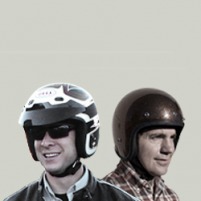


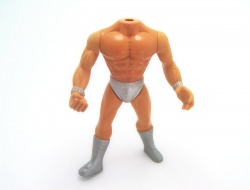
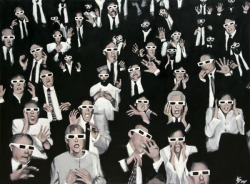


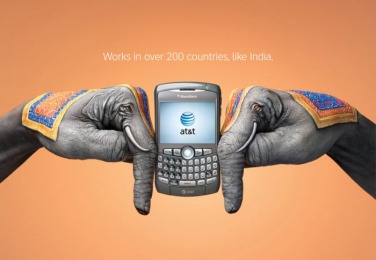
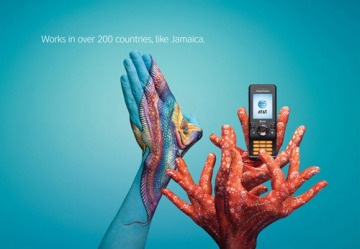
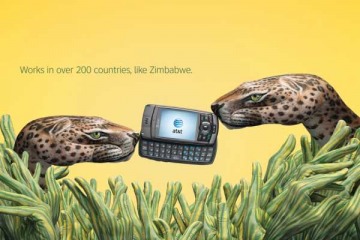
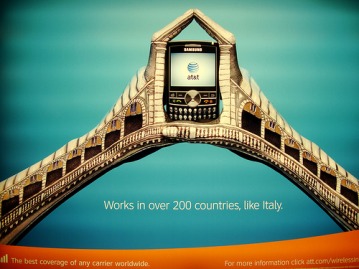
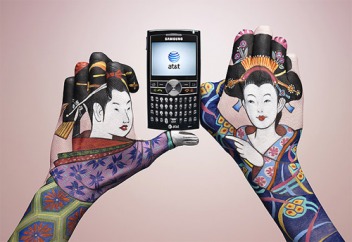
 RSS Feed
RSS Feed